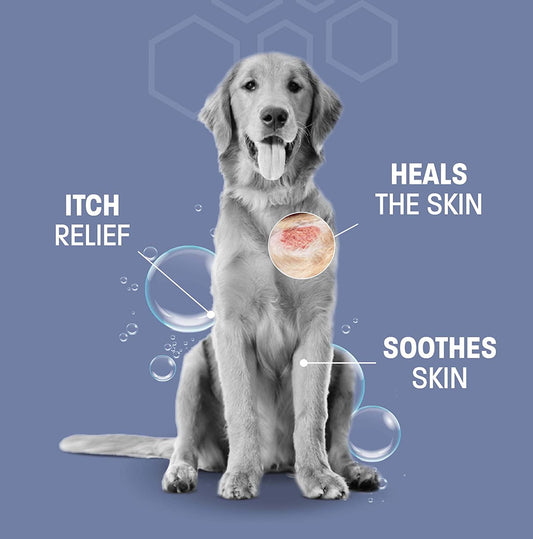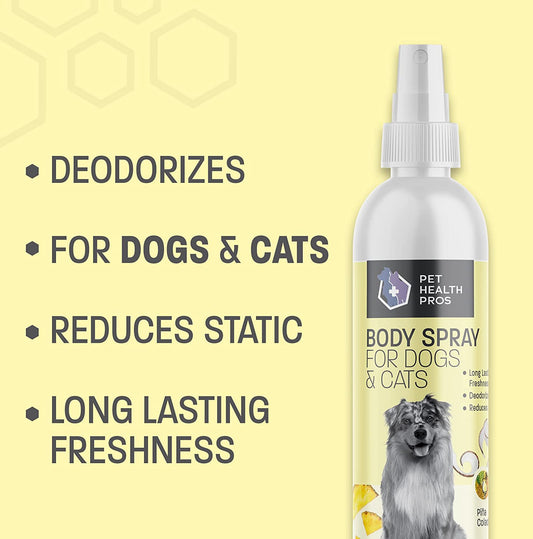Introduction
As pet owners, we all want our furry friends to live happy and healthy lives. One crucial aspect of ensuring their well-being is keeping them physically active. Regular exercise not only helps maintain a healthy weight but also improves cardiovascular health, strengthens muscles, and provides mental stimulation for our pets. In this article, we will explore a variety of exercise ideas that can help keep your active pet fit and content.
Table of Contents
- Why Exercise is Important for Pets
- Determining Your Pet's Exercise Needs
- Walking and Jogging
- Interactive Playtime
- Agility Training
- Swimming
- Hiking and Nature Trails
- Fetch and Frisbee
- Dog Sports
- Treadmill Workouts
- Indoor Exercise Ideas
- Puzzle Toys and Treat Dispensers
- The Benefits of Regular Exercise
- Tips for a Safe and Effective Exercise Routine
- Conclusion
- FAQs
Why Exercise is Important for Pets
Regular exercise plays a vital role in maintaining your pet's overall health and well-being. Here are some key reasons why exercise is important for pets:
Weight Management: Just like humans, pets can also struggle with weight issues. Regular exercise helps burn calories and prevents obesity, which can lead to various health problems.
Mental Stimulation: Exercise keeps your pet mentally engaged and helps alleviate boredom and anxiety. Mental stimulation is especially important for active pets to prevent destructive behaviors.
Physical Fitness: Physical activity strengthens your pet's muscles, improves flexibility and coordination, and promotes overall physical fitness.
Cardiovascular Health: Exercise increases heart rate and improves circulation, which is essential for a healthy cardiovascular system.
Bonding and Socialization: Engaging in physical activities with your pet strengthens the bond between you and provides an opportunity for socialization with other pets and people.
Determining Your Pet's Exercise Needs
Every pet is unique, and their exercise requirements may vary depending on factors such as age, breed, size, and overall health. It's important to consult with your veterinarian to determine the appropriate amount and intensity of exercise for your pet. Consider the following factors when determining your pet's exercise needs:
Age: Puppies and young animals may have more energy and require shorter bursts of exercise, while older pets may benefit from low-impact activities.
Breed: Different breeds have varying exercise requirements. Some breeds, such as Border Collies or Huskies, are known for their high energy levels and need more vigorous exercise.
Size: Smaller dogs may have different exercise needs compared to larger breeds. Adjust the intensity and duration of exercise accordingly.
Health Condition: Pets with pre-existing health conditions may have specific exercise limitations. Always follow your veterinarian's advice regarding exercise restrictions.
Walking and Jogging
Walking and jogging are excellent exercises for both dogs and cats. They are low-impact activities that provide a great cardiovascular workout. Here are some tips for walking and jogging with your pet:
Start with short walks and gradually increase the duration and intensity as your pet's fitness level improves.
Use a comfortable leash and harness for dogs, and ensure your cat is in a secure and safe carrier if you choose to take them along for a walk.
Vary your walking routes to provide mental stimulation for your pet.
If your dog has a lot of energy to burn, consider incorporating intervals of jogging or running into your walks.
Interactive Playtime
Interactive play sessions are an excellent way to keep your pet physically and mentally stimulated. Here are some ideas for interactive playtime:
Use toys such as interactive balls, puzzle toys, or treat dispensers that require your pet to work for their rewards.
Engage in games like hide-and-seek, where you hide treats or toys around the house or in the yard for your pet to find.
Play tug-of-war or fetch with your dog using safe and appropriate toys.
Agility Training
Agility training is a fantastic exercise option for active dogs. It involves navigating through an obstacle course, which helps improve their coordination, agility, and mental focus. Consider enrolling your dog in agility classes or setting up a small agility course in your backyard.
Swimming
Swimming is a low-impact exercise that is gentle on joints and muscles while providing a full-body workout. If your pet enjoys water and is a competent swimmer, take them to a pet-friendly beach or swimming pool for supervised swimming sessions.
Hiking and Nature Trails
Exploring nature trails and going on hikes with your pet is not only physically beneficial but also mentally stimulating. Before embarking on a hiking adventure, ensure that the trail is pet-friendly and suitable for your pet's abilities. Bring along water, snacks, and waste bags for a comfortable and enjoyable experience.
Fetch and Frisbee
Playing fetch or frisbee is a classic exercise option for active dogs. Find an open space such as a park or backyard where your pet can freely chase after a ball or frisbee. Make sure to use appropriate toys designed for dogs to avoid any potential hazards.
Dog Sports
Engaging in dog sports such as flyball, dock diving, or agility trials provides an outlet for your pet's energy while strengthening the bond between you. These sports offer a combination of physical exercise, mental stimulation, and socialization opportunities.
Treadmill Workouts
If the weather doesn't permit outdoor exercise or you don't have access to open spaces, a treadmill can be a convenient option for exercising your dog. Introduce your pet gradually to the treadmill and ensure their safety by using a leash attachment and providing supervision.
Indoor Exercise Ideas
When outdoor exercise options are limited, there are still plenty of activities you can do with your pet indoors. Here are some indoor exercise ideas:
Set up an obstacle course using household items such as cushions, tunnels, or hula hoops.
Play interactive games like "find the treat" by hiding treats around the house for your pet to search and discover.
Use laser pointers or feather toys to engage your cat in playful chasing.
Puzzle Toys and Treat Dispensers
Puzzle toys and treat dispensers provide mental stimulation and encourage problem-solving skills. These toys require your pet to figure out how to access the treats or food hidden inside, keeping them entertained and mentally engaged.
The Benefits of Regular Exercise
Regular exercise offers numerous benefits for your pet's overall health and well-being, including:
- Weight management and prevention of obesity-related health issues.
- Improved cardiovascular health.
- Stronger muscles, better flexibility, and coordination.
- Mental stimulation and reduced boredom and anxiety.
- Strengthened bond between you and your pet.
- Opportunities for socialization with other pets and people.
Tips for a Safe and Effective Exercise Routine
To ensure a safe and effective exercise routine for your pet, keep the following tips in mind:
- Start slowly and gradually increase the duration and intensity of exercise.
- Provide plenty of fresh water and breaks for rest during exercise sessions.
- Avoid exercising in extreme weather conditions that may be too hot or cold for your pet.
- Choose appropriate exercise activities based on your pet's age, breed, and overall health condition.
- Always supervise your pet during exercise and prioritize their safety.
Conclusion
Keeping your pet fit throughregular exercise is vital for their overall health and well-being. By incorporating a variety of exercise ideas into their routine, you can ensure that your active pet stays physically and mentally stimulated. From walking and jogging to interactive playtime, swimming, and engaging in dog sports, there are plenty of options to cater to your pet's individual needs and preferences.
Remember to consider factors such as age, breed, size, and health condition when determining the appropriate exercise regimen for your pet. Always consult with your veterinarian to ensure that you're providing the right level of activity for your furry friend.
Incorporating regular exercise into your pet's routine offers a wide range of benefits, including weight management, improved cardiovascular health, stronger muscles, mental stimulation, and a strengthened bond between you and your pet.
So, grab your pet's leash, a ball, or their favorite toy, and embark on a journey to keep them fit and healthy. Together, you can enjoy the wonders of exercise while creating unforgettable memories.
FAQs
1. How much exercise does my pet need? The amount of exercise your pet needs depends on various factors such as age, breed, size, and health condition. Consult with your veterinarian to determine the appropriate exercise regimen for your pet.
2. Can indoor cats benefit from exercise too? Absolutely! Indoor cats can benefit from interactive play sessions using toys, laser pointers, or even puzzle toys. These activities provide mental stimulation and exercise for your feline friend.
3. Is swimming safe for all dogs? Swimming can be a safe exercise option for most dogs, but it's important to consider their swimming abilities and supervise them closely. Not all dogs are natural swimmers, so take caution and provide a safe environment for them to enjoy the water.
4. How can I make exercise fun for my pet? Incorporate toys, treats, and interactive games into your exercise routine. Engage in activities that your pet enjoys and tailor the exercise to their preferences.
5. Can older pets engage in exercise activities? Older pets can still benefit from exercise, but it's important to consider their limitations and any age-related health conditions. Adjust the intensity and duration of exercise to suit their needs and consult with your veterinarian for guidance.









